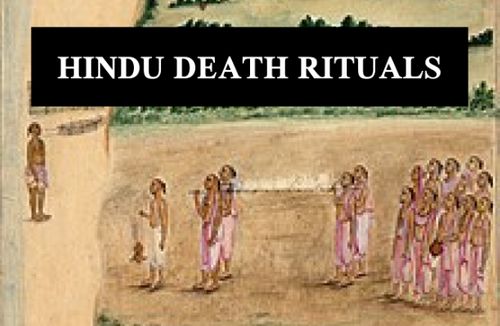Hindu death rituals: by a behaviorist
May 17, 2022 · 2 mins read
0
Share
Death is inevitable. Its impact is different for every individual. The loss of a loved one can be traumatic and painful. How does one accept it and move on? Behaviourist Pradeep Chakravarthy explains how Hindu death rituals help to overcome the loss.
Save
Share
There are 16 Samskaras in Hinduism. Samskaras are the subtle mental impressions left by all thoughts, intentions and actions that an individual has ever experienced. The last one is the death Samskara (Antyeshti).

Save
Share
Antyeshti funeral rites are performed after the death of a person by his relatives. They are also called Antim Sanskar (the last sacrifice).
Save
Share
It is believed in Hinduism that all life goes through birth, life, death, and rebirth in the cycle of samsara. No individual goes to hell or heaven. Every person is reborn based on their karma (deeds). So, good deeds in a previous life leads to a better next life.

Save
Share
The purpose of the cycle of samsara is to create a good society: The goal of having a happy next life motivates one to do good deeds in the present life.
Save
Share
Rituals before cremation: There are rituals like giving a bath to the dead, dressing them up with their favourite things, cooking their favourite food and placing it in front of the dead. It is the family’s last chance to do good things for the deceased and feel content about it.
Save
Share
Cremation of the body: It is believed that the soul gets attached to the body and refuses to leave it. The soul easily leaves the body when burned. It also makes the descendent’s family think that the person is gone once burned.

Save
Share
Thirteen-day mourning period and communal support: After the cremation, the decedent's family begins a 13-day mourning period. During this time, family and friends visit to offer condolences. Communal support is offered with acts like offering food for 13 days.
Save
Share
Post-cremation rituals: Other rituals like tapping the toe and putting rice in the mouth are to make one believe that there is no life in the body. Most rituals are not for the deceased but for the living. They are about bringing closure to the living.
Save
Share
Final Note: In Hinduism, it is believed that the body is a gift of God. After the cremation, it goes to God and our only true connection is with the divine. All the other connections become transient. All the rituals above have stood the test of time, and helped humans move on.
Save
Share
0
